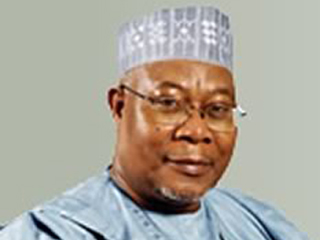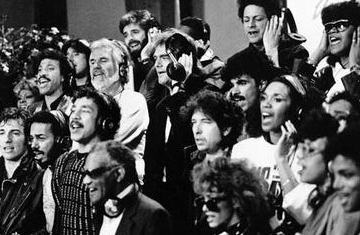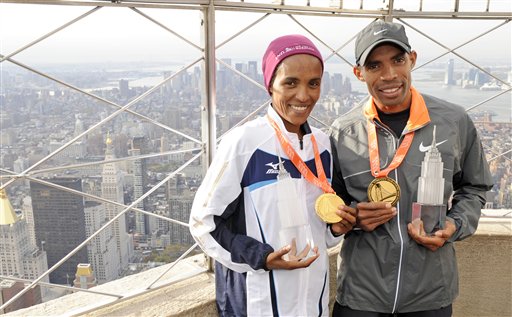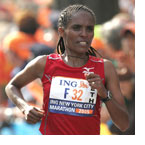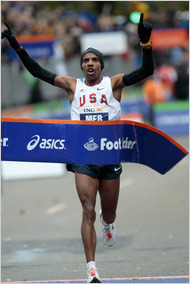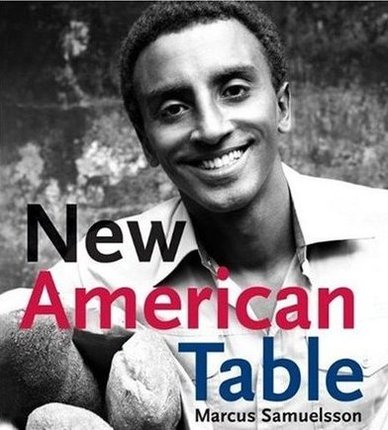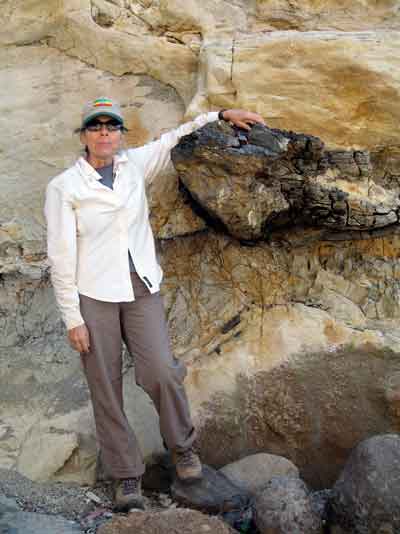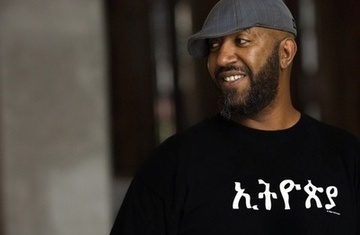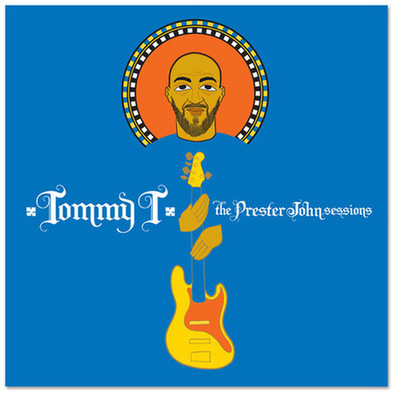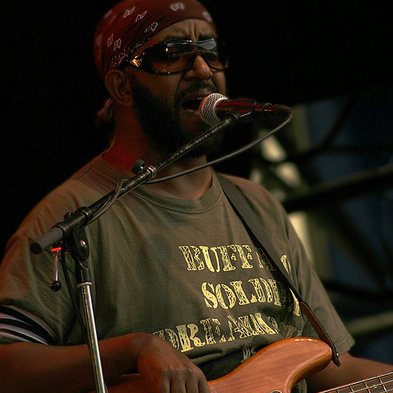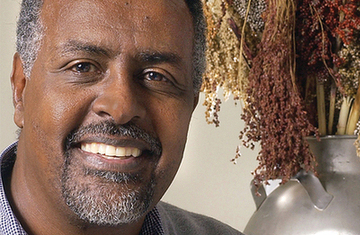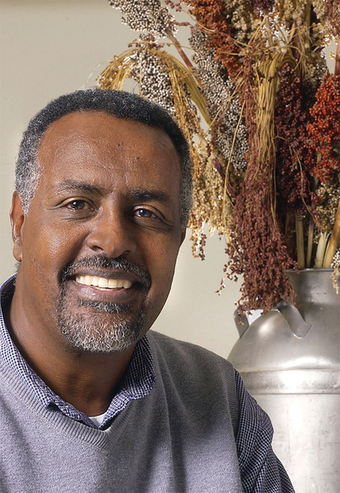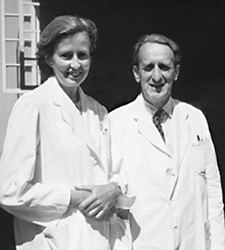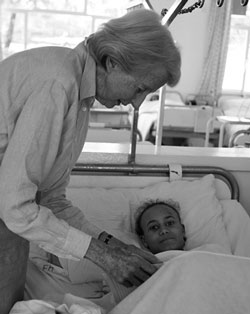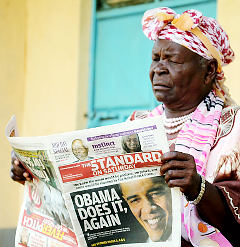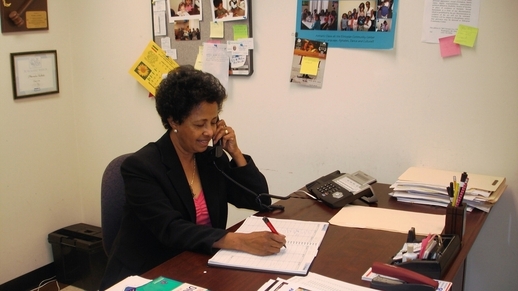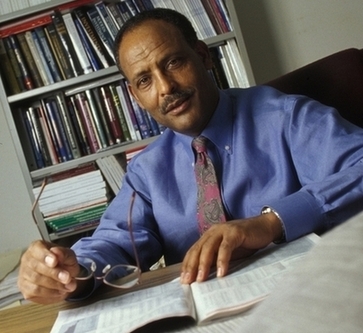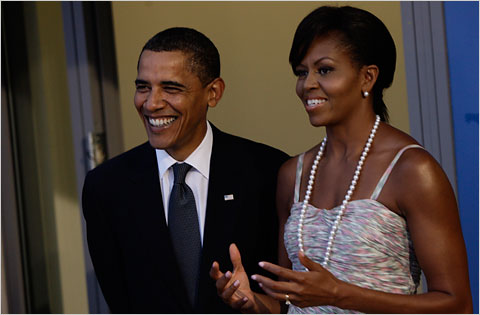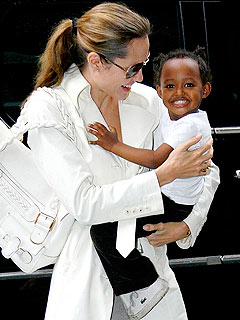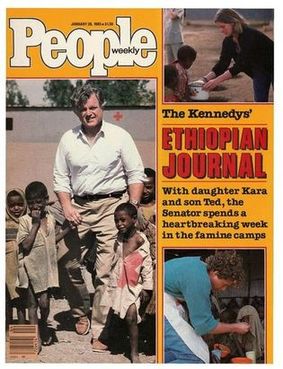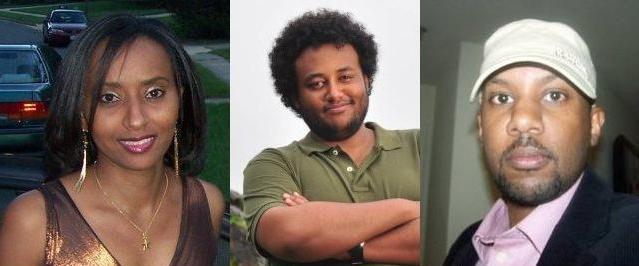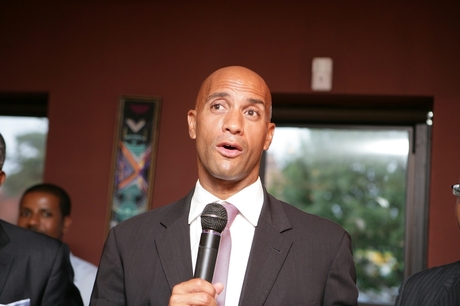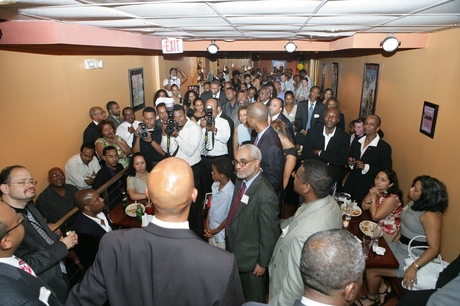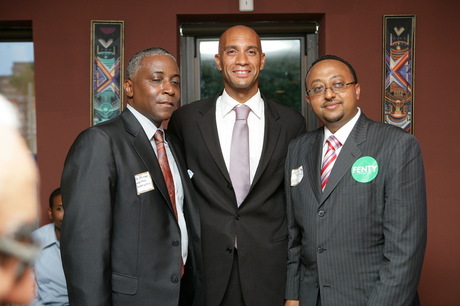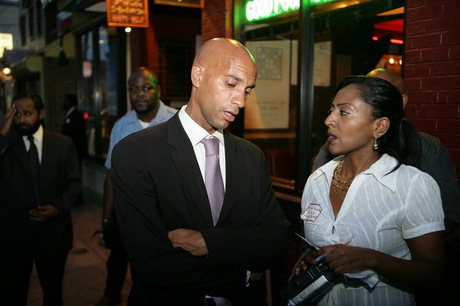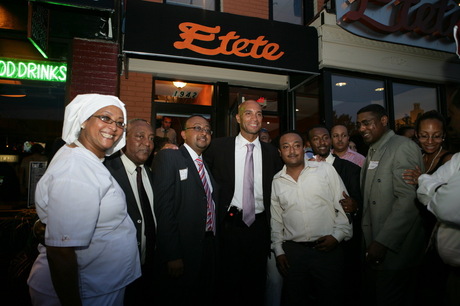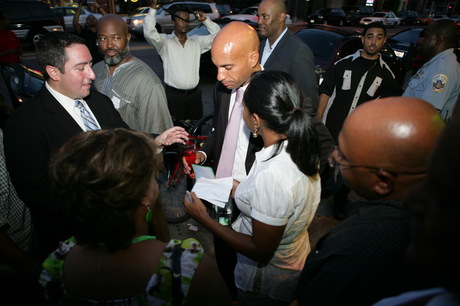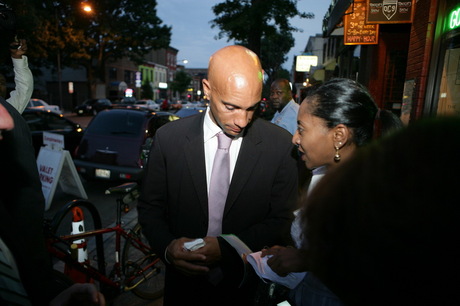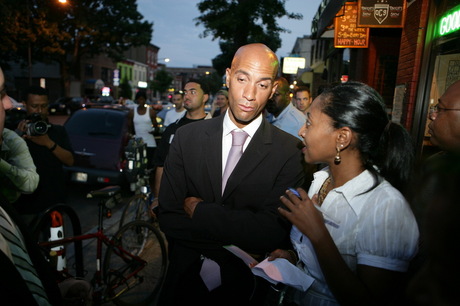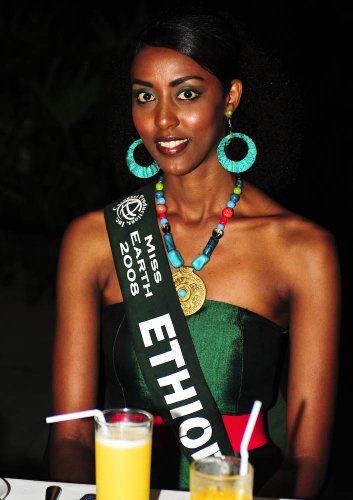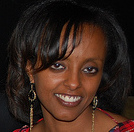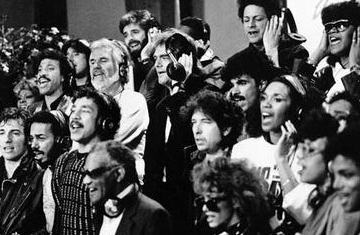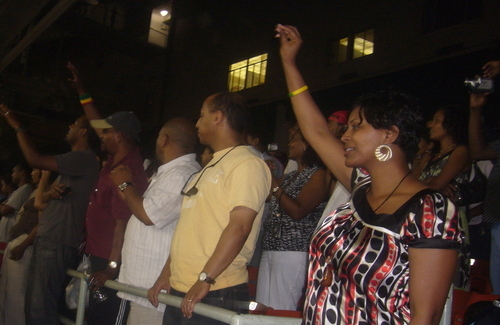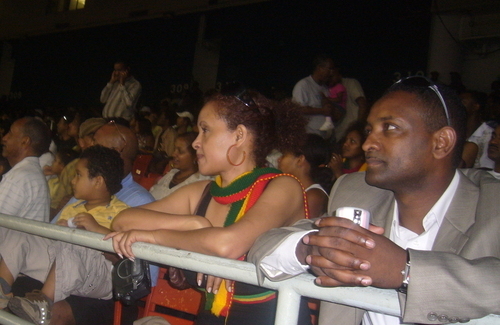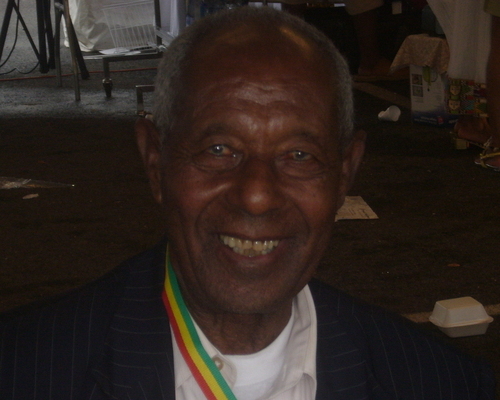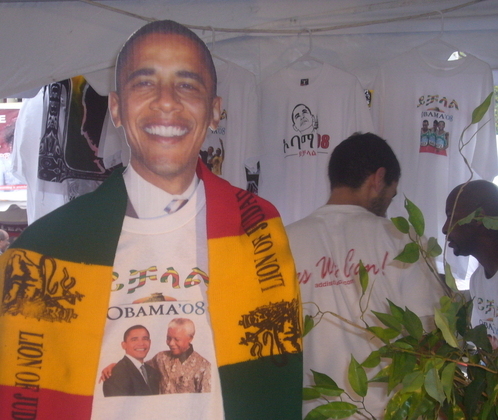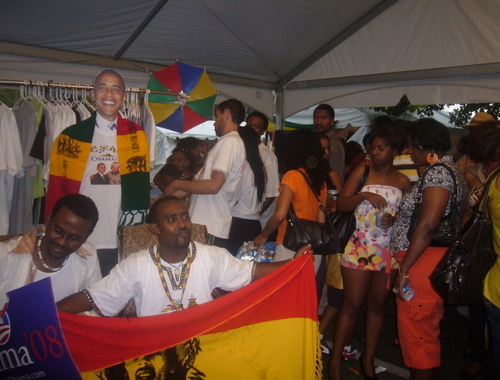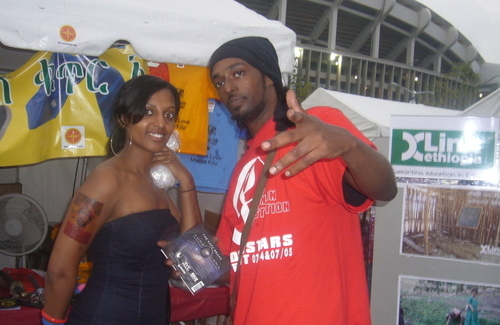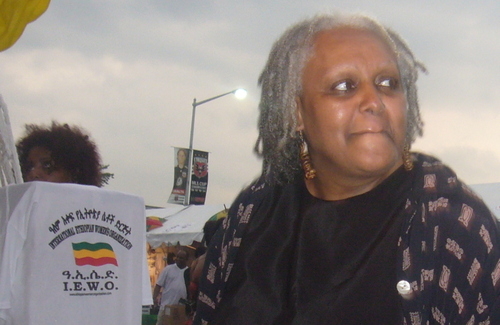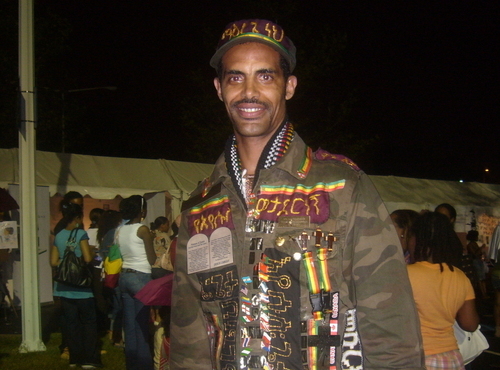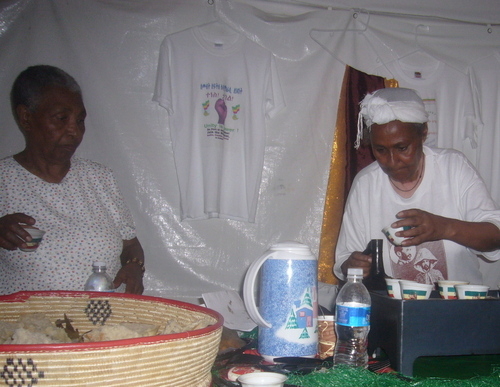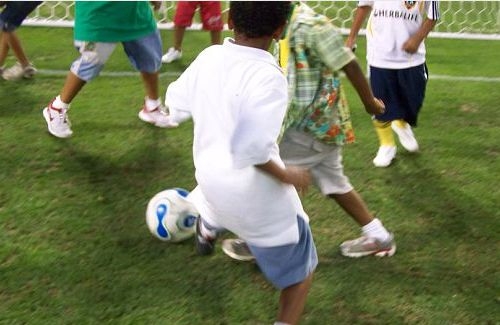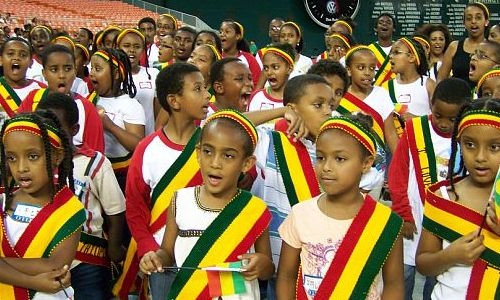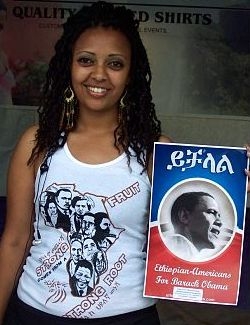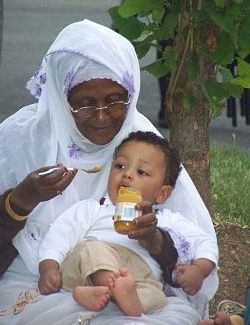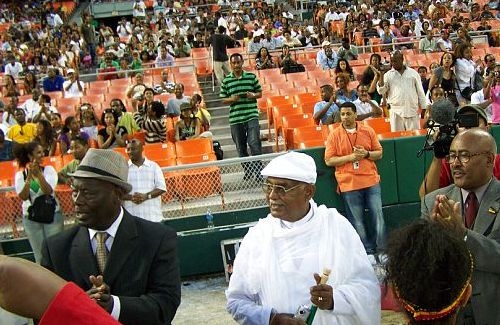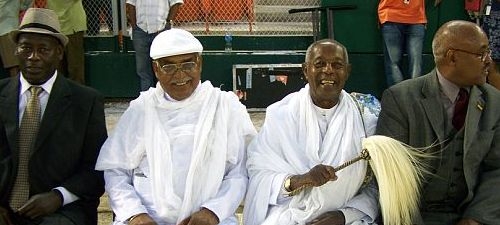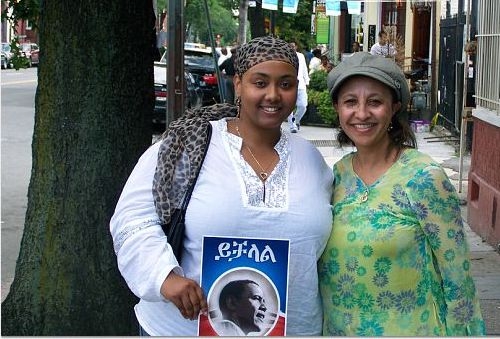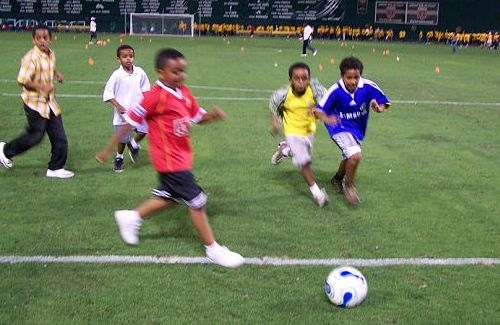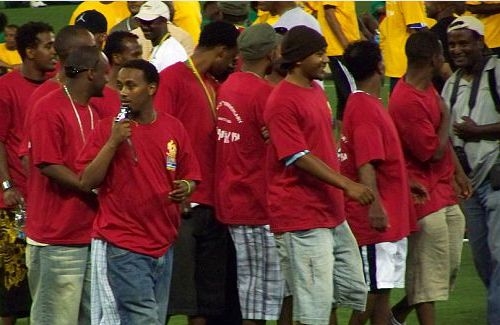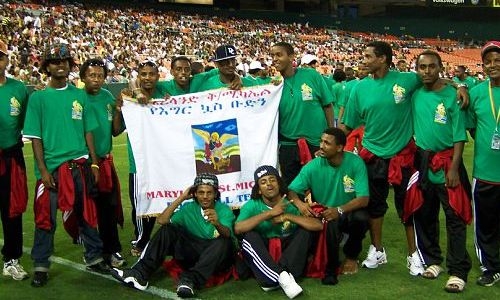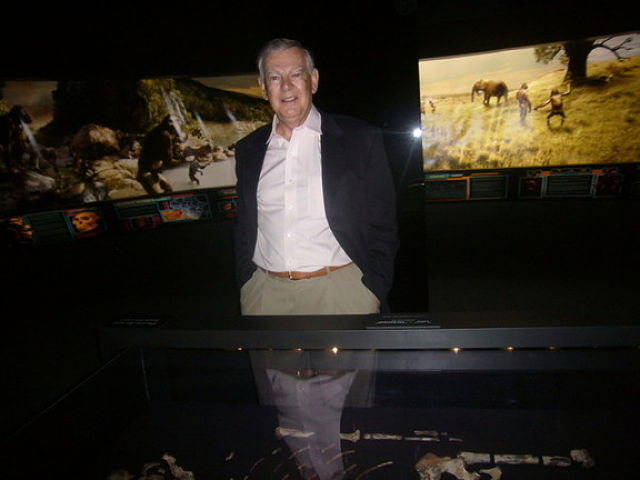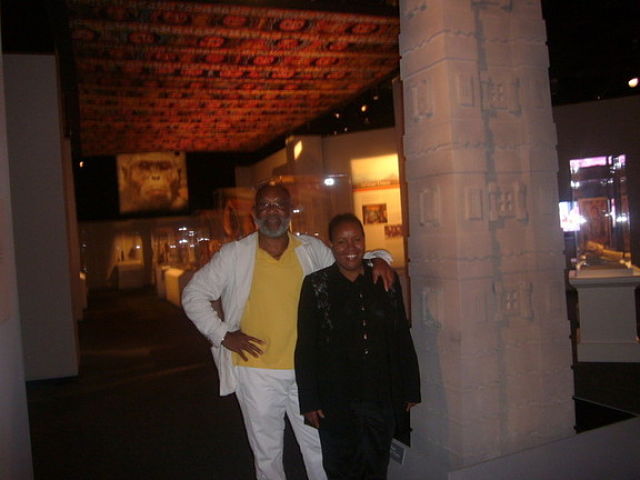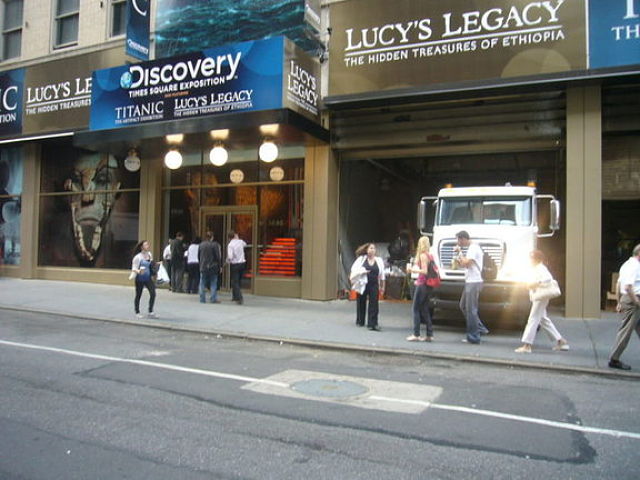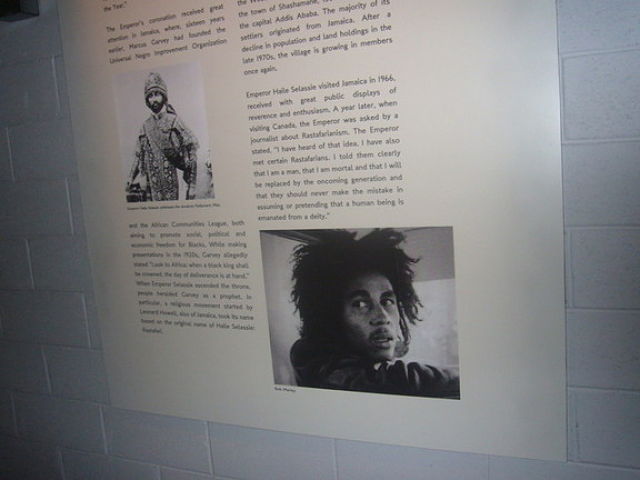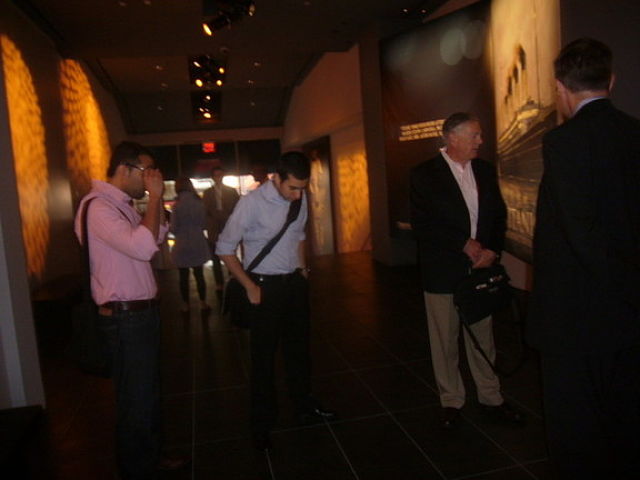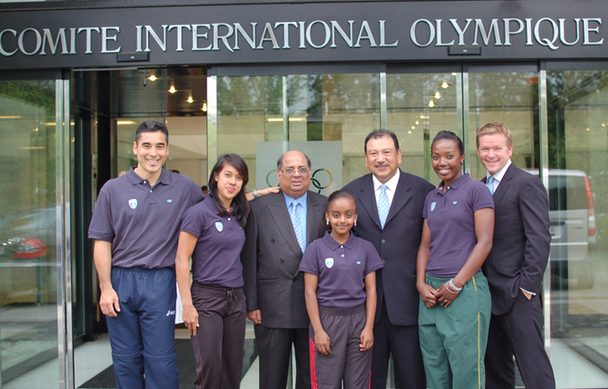Above: The city of Chicago, which played host to the 2009
Ethiopian Soccer Tournament, is home to a fast growing
African population.
The Chicago Tribune
Aid system frustrates refugees
The crowd was angry inside the Ethiopian Community Association of Chicago — a stark contrast to the cheery African murals that have greeted one refugee community after another since the Uptown nonprofit organization formed 25 years ago. The reason: more evidence that the federal system set up to welcome roughly 2,500 refugees to Illinois per year is nearly broken…White House officials have acknowledged the need to reform the system, which provides a one-time grant of $425 per adult refugee and leaves much of the burden for housing, job searches and other needs to overwhelmed local aid groups. Read more.
Related from Tadias archives
Tadias Magazine
Coming to America
By Professor Donald Levine

Chicago (Tadias) – The story of the Ethiopian expatriate community in Chicago and beyond belongs to the larger story of the creation of the United States. For four centuries, successive waves of immigration from dozens of countries in Europe, Africa, and Asia have helped shape American society and provide it with continually renewed energies. The earliest settlers came mainly from Britain, Holland, Germany, and France, in search of religious freedom or opportunities for exploration and trade. Once colonies were established, Europeans came simply to seek their fortunes in this new land, bringing or then importing indentured servants from England and slaves from Africa. After the importing of slaves was prohibited in the early 19th century, the immigrants came from Western Europe for some time, especially from England to find economic opportunities, from Germany to escape political repression, and from Ireland to flee poverty and famine.
By mid-century, immigrants from China and Japan began coming to America’s new Western frontier. At the century’s end, most immigrants came from Southern and Eastern Europe, especially Italy and Poland. Huge numbers of Eastern European Jews joined the exodus, to escape murderous pogroms as well as poverty. Although immigration peaked around the turn of the century, waves of immigrants displaced by World War I, the Nazi persecutions, and World War II continued the cycle of coming to America.
The last twenty-five years have seen an increase in the proportion of immigrants who came as political refugees. While immigrants still arrive from all parts of the globe, Southeast Asian refugees, especially from the war-torn countries of Cambodia and Vietnam, have been the most visible. The most recent arrivals include refugees from formerly communist countries, in search of both political freedom and economic stability. Although the Ethiopian immigrant community has arrived without much fanfare, its increase during the early Derg years was phenomenal. In 1974, I am told, Ethiopia had the smallest proportion of its citizens living abroad of any country in the world, while five years later, in 1979, it had the highest.
While over these centuries the physical process of ‘coming to America’ has evolved from arduous long journeys to simple airplane trips, the psychological process of coming to America (that is, adjusting to American society) has changed no less dramatically. Changes in the ability of immigrants to adjust reflect two main factors: the reasons why they left their homeland, and the way they were received by the new environment. For what reasons do people leave their homelands?
At the peak of immigration during the decades 1880-1910, most immigrants were drawn to America by their search for ‘a better life’ than they could find at home. Millions were lured by the prospects of prosperity which was said to abound in the United States, harking to phrases like ‘there, the streets are paved with gold.’ These hyperbolic notions had some basis in fact. New industries required large supplies of labor. Immigrants had no trouble finding jobs in factories and on railroads. They were willing to work hard for little pay because it represented more than they could ever have imagined at home. Land and other material resources were just as plentiful as employment.
Immigrants who responded to such ‘pull’ factors were for the most part voluntary migrants, those who chose to leave their homeland for the sake of economic opportunities. Some saved for years to make the journey possible; others were sponsored by family members who had gone before them. Coming through their own free choice, such immigrants were more likely to make the sacrifices, including their cultural habits, which were required at that time to make their ‘American dream’ come true. Pull factors continue to operate in bringing newcomers to America. Even though the age of rapid economic expansion has ended, making it difficult even for long-established Americans to find work or to make ends meet, the United States continues to be viewed as a land of economic opportunity by residents of many other countries.
Migration is spurred for different reasons when conditions in the home country are severe. Famines, chronic employment shortages, political or religious oppression, or wars or civil unrest often ‘push’ dislocated, impoverished, or oppressed individuals from their homelands. In response to such push factors, people are not so much voluntarily coming to America as they are involuntarily leaving their homeland. They do so because America has historically been seen as a refuge for oppressed people. The motto inscribed on the Statue of Liberty “Give me your huddled masses, yearning to be free” publicly affirms a welcome to immigrants of all kinds. Immigrants who left voluntarily had greater choice in the destination and time of their departure. They thus had more of a chance to prepare for life in the new country.
Involuntary migrants, on the other hand, may have had little choice as to the time of their departure or their destination, giving them less opportunity to prepare for what lies ahead. What is more, those who come as refugees or other permanent involuntary immigrants generally seek to remain true to their native traditions and have no strong incentive to adopt American ways. Indeed, many are less anxious to join American society than they are desirous of returning to their homeland some day. This ‘sojourner mentality’ makes them less likely to want to learn English and makes it more difficult for them to ‘come to America’ in the sense of accepting idiosyncrasies of American society, things which voluntary migrants might more easily learn to deal with or even appreciate.
This is often true even if they recognize that a return to their homeland is impossible, at least in their lifetime. Forced to emigrate, refugees and other involuntary migrants tend to feel that although they may be taken from their homeland, their homeland can never be taken from them. Accordingly, they tend to create an island of familiar culture in a foreign cultural sea. To do this, immigrants typically gather in urban neighborhoods where others from their homeland have settled. Such neighborhoods are home to most new immigrants, whether they come voluntarily or involuntarily. Immigrants today often continued … join together to form small businesses that appeal to customers in such ethnic enclaves. The ambitious among them may build these into large businesses or even move out of the ethnic neighborhood altogether.
At the same time, those who wish to preserve their traditional ways might choose to stay in ethnic communities where their traditional ways are easier to maintain than when isolated from fellow ethnics. Whether creating such a cultural ‘island’ is possible depends not only on the desires of the migrants to create it and the resources they have to do so, but also on the environment in which they live. This environment has changed during the past century, from a demand for total assimilation to ‘American’ ways to an acceptance of a pluralistic mixture of cultures.
At the turn of the century, when immigration from Eastern and Southern Europe was at its peak, most Americans embraced the notion of the ‘melting pot.’ This metaphor implied that the new country served as a crucible in which those of all ethnic backgrounds would be fused together to form a new American culture. In effect, newcomers of those years were expected to conform closely to the American culture established by long-term residents. Immigrants were expected not only to learn English, but also to acquire American habits as defined by those who had lived here for a generation or two. New immigrants were ridiculed into discarding their Old World ways and becoming more like those who had arrived earlier. This attitude instilled in an entire generation of immigrants striving to become just like other Americans a sense of shame regarding their own culture and language.
As a result of social pressures and their own desires, immigrants did not pass on their language and customs to their children. Second- and third-generation Italians, Irish, and Poles grew up with no knowledge of their parents’ and grandparents’ language and cultural heritage. A sense of unique cultural identity was something those early immigrants sought to lose as quickly as possible, because they recognized that ‘making it’ in America meant giving up characteristics that made them seem ‘foreign.’ Over the past few decades, America has learned to tolerate, or been forced to accept, many differences in lifestyle, language, and beliefs among its people.
The Civil Rights movement of the 1960s and the feminist movement of the 1970s and 1980s forced Americans to reconsider traditionally disadvantaged groups whose needs and interests had been underrepresented, even silenced. Movements such as Black Power and La Rasa sent strong messages to African- American and Hispanic-American groups and individuals to take pride in their racial and cultural heritage. These ‘identity’ movements stimulated other groups to reconsider their own ethnic heritage, giving rise to the formation of Italian-American, Irish-American, and similar ethnic ‘interest groups.’ Relatedly, Americans have recently witnessed the phenomenon of the’third-generation return,’ as grandchildren of immigrants discover and take pride in the heritage their grandparents were ashamed to transmit.
Due to such sweeping social changes, immigrants today face an environment radically different from that of a century ago. American society today is much more tolerant of diversity than before. Today, ethnic diversity is celebrated, multiculturalism is in style, and ethnic Americans tend increasingly to celebrate cultural heritages long buried by assimilationist trends. In fact, displaying unique cultural or ethnic characteristics has become an accepted, even encouraged, means of ‘being American.’ The United States is recognized as a country consisting of people from a variety of ethnic backgrounds, with a few, not all, characteristics in common. This pluralistic attitude is often compared to the image of a ‘salad bowl,’ a mixture in which, unlike the melting pot, each piece retains its distinctive form and flavor to produce a healthy collection of interests and backgrounds. Although this acceptance comes at a time when the number of new immigrants is but a fraction of the number arriving in 1900, those who do come are given much more freedom, informally and officially, to retain their own distinctive cultural practices. Beyond learning some English, sending their children to school, and taking some form of employment, little else is required of immigrants, and they are required to relinquish few, if any, of their former habits and customs.
In such an environment, it is clear that recent immigrants have it easier than their predecessors in not being forced to relinquish their past. Current newcomers are allowed to choose how much of their culture they want to preserve, and which ‘American’ ways they want to adopt. The contemporary situation, then, combines an increase in the number of immigrants who come more or less involuntarily, as political refugees, with an increased acceptance of the home cultures from which they come. Today’s immigrants do not have to choose between social acceptance needed for economic survival and adherence to their traditional ways. Living in ethnic neighborhoods may even promote economic success. It certainly represents a fully accepted way of being American in our time. Today’s immigrants thus arrive with a greater interest in retaining their home culture and enter an American society that shows enhanced appreciation of cultural diversity.
Accordingly, although today’s immigrants may continue to feel some social pressure to conform to certain American habits of dress, food or behavior, and while they still face difficulties in maintaining their islands of ethnicity in a sea of ‘Americanisms,’ they should keep in mind how much less pressure exists today than a century before. The fact is that nowadays ‘coming to America,’ that is, learning to cope with a strange new world, is a good deal easier than for previous immigrants, because immigrants today enjoy a freedom to decide what traditional ways to maintain and what American ways to adopt. In this more tolerant environment, recent immigrants are able to form stable, vibrant communities together with those who arrived earlier from their home country. Especially for refugees and other involuntary immigrants, these expatriate communities create a safe haven in which familiar habits and beliefs can be preserved.
Such communities, however, do not preserve culture the way a museum would, as a static snapshot of one moment in time, but rather as a living, developing way of life. When a diasporic community retains a living culture, it then is in a position to be able to infuse new life back to the homeland, whose own traditions may face certain threats. In this perspective, the Ethiopian community of North America faces a triple challenge. First, it needs to provide continuing assistance to new immigrants, especially those who may have been pushed to leave because of repressive conditions at home. On this front, the Ethiopian Community Association of Chicago has long played a conscientious and constructive role. Second, North America offers resources to sustain those aspects of its traditional culture that are being eroded at home due to ignorance, poverty, or reckless modernization. In this regard, such organizations as the Center for Ethiopian Arts and Culture, the Ethiopian Research Council, and the various Ethiopian magazines and publishing houses have made enormous contributions.
Finally, the Ethiopian and Eritrean expatriate communities face a special challenge in view of the tendencies toward ethnic and regional separatism that have threatened the integrity of their homeland. Indeed, in some quarters it has become fashionable to deny the very facts about the existence of the enduring multiethnic society that took shape in historic Ethiopia. In this country, at least, Ethiopians need not give in to the temptations of narrowly- based ethnic factionalism and can do much to preserve and restore the valuable traditions of their national culture.
—
About the Author:
Donald N. Levine is the Peter B. Ritzma Professor Emeritus of Sociology at the University of Chicago. He is the author of Wax and Gold: Tradition and Innovation in Ethiopian Culture (1965), Greater Ethiopia: The Evolution of a Multiethnic Society (1974), Visions of the Sociological Tradition (1995) and Powers of the Mind: The Reinvention of Liberal Learning(2007). Professor Levine’s research and teaching interests focus on classical social theory, modernization theory, Ethiopian studies, conflict theory and aikido, and philosophies of liberal education.
